Open Journal of Plant Science
Chickpea breeding program and research in Portugal
Isabel Duarte*
Cite this as
Bekele S, Mekbib F, Keneni G, Amsalu B (2022) Chickpea breeding program and research in Portugal. Open J Plant Sci 7(2): 025-033. DOI: 10.17352/ojps.000049Copyright
© 2022 Bekele S, et al. This is an open-access article distributed under the terms of the Creative Commons Attribution License, which permits unrestricted use, distribution, and reproduction in any medium, provided the original author and source are credited.Chickpea (Cicer arietinum L.) is a very important crop in the world. Portugal was traditionally sown as a spring crop and so extremely affected by long periods of drought and temperature variation throughout the growth cycle. Chickpea grain yields decrease substantially due to increased air temperature and the severity of drought. To face the Mediterranean-type climate pattern, chickpea breeding programs were reoriented to develop chickpea germplasm tolerant/resistant to the main abiotic and biotic stress and adapted to different environments and production systems. This study relates chickpea yields (35 years) with rainfall average in Alentejo, a Southern Portugal region with a Mediterranean-type climate. Our approach shows that selection should apply multiple and complementary criteria. The physiological and morphological studies are important in breeding programs, to combine not only resistance to drought and temperature, and biotic stress but also high yield potential and yield stability. The main objective is to obtain new chickpea varieties for the rainfed conditions of the Mediterranean region. From this work, four chickpea varieties (Kabuli type), were registered on the National Variety Catalogue. Actually, the national chickpea genetic breeding program has already registered 11 varieties.
Introduction
The Mediterranean-type climate is characterized by hot and dry summers and cool and wet winters [1-3], which can be considered as the transition between dry tropical and temperate climates. This type of climate occurs on the west coasts of all continents between latitudes 30 and 45 (Figure 1).
The Mediterranean-type climate is found in all continents including the whole or part of some countries of South Europe (Portugal, Spain, France, Italy, Bulgaria, Montenegro, Serbia, Slovenia, Albania, and Greece), West Asia (Turkey, Cyprus, Syria, Lebanon, Israel, Jordan, Iraq, and Iran), North Africa (Morocco, Algeria, Tunisia, Libya, and Egypt), South Africa, North and South America (California and Chile) and South Australia, covering an area of about 2.76 M km2, corresponding to 2.3% of the Earth’s land surface. The largest part is the Mediterranean region with 1.68 Mkm2 (60% of the total area of Mediterranean-type climate), followed by 0.61, 0.28, 0.13, and 0.06 Mkm2 for Australia, California, Chile, and South Africa, respectively [3,5,6].
In general terms, the Mediterranean region is one of the driest agricultural regions on earth, containing only 2.6% of the world’s freshwater resources [3,5,7]. In addition, the Mediterranean region is characterized by an extremely variable climate in terms of the amount and distribution of rainfall as well as the occurrence of heat stress events [2,8].
The main climatic characteristics of these regions are based on the erratic distribution of rainfall, which varies among locations and from year to year, between 100 mm and 2000 mm [9], and on the very high temperatures achieved in the very dry seasons.
Climatic models for the Mediterranean region [2,7,10] pointed out a reduction of rainfall between 1.5 and 7.5% in the last 60 years.
Climatic parameters are extremely important in agricultural systems and chickpea production. A chickpea is a plant that does not need vernalization. In the seedling stage, it can withstand relatively low temperatures (12 ºC) as long as these periods are short. From this phenological stage, the temperature is a determining factor in plant growth and development and in the efficiency of modulation. In the reproductive period, high temperatures lead to flower and pod abortion. Temperatures above 32oC, promote an increase of foliar respiration that cannot be compensated by water uptake. Maximum temperatures during spring promote also the premature senescence of plants, and consequently a reduction in the vegetative cycle with substantial negative effects on yield potential [3,12,13].
Grain legumes production in Portugal
Portugal is a small country with a typical Mediterranean-type climate that has a suitable capacity to produce grain legumes. This is because grain legumes (chickpeas, lentils, lupines, fava beans, and some Vicias sp.) are very well adapted to dryness showing good response to climatic variations. They are generally grown as rainfed crops in marginal areas. There is great variability in terms of yield and stress tolerance, considering the available commercial germplasm. One of the main causes of low and variable productivity is the susceptibility of current cultivars to environmental stresses.
Portugal has good conditions to produce chickpeas, but why don’t we grow more chickpeas in Portugal? During the nineties, the problem occurred mainly due to a lack of low European Common Agricultural Policy (CAP) subsidies to the crop and also lower prices of imported raw materials.
Chickpea in Portugal was traditionally sown, in early spring and yields were normally low. The date of sowing has an extreme influence on crop performance once it determines the environmental conditions to which the various phenological stages of the crop will be exposed. Weeds, diseases, insect pests, high temperatures, and drought are the most important limiting factors of grain yield (low shoot biomass, plant height, flower, and grain filling). There were also some problems with crop management (plant type not adapted to mechanical harvesting) and commercial varieties that were extremely susceptible to the main diseases and drought. So, farmers almost abandoned the crop [13,14].
In recent decades, the deficit of plant protein for food and feed consumption has been notorious (which has also been verified throughout Europe), at worrying levels. For this reason, the National Plant Breeding Station at Elvas, Portugal has established a breeding program for the genetic improvement of chickpeas (among other legume species for grain), which aims to develop new varieties of chickpeas with high grain yields, seed size suitable for consumers requirements and good adaptation to the regional environment. Over the years, it has been verified that these crops provide several ecosystem services such as soil conservation and structure, protection against erosion (upright roots), an increase of soil organic matter, soil nitrogen economy, and improvement of natural-based disease control in cereals [13,15,16].
Grain legumes are considered a good precedent in rotation [17], as their contribution to soil fertility is one of the key factors in sustaining the production of cereals and other crops, e.g. rapeseed, in dry rainfed areas.
Actually (last 6 years) we are currently creating a consortium that involves the three major players of the plant protein chain (Figure 2) and to establish a rural policy based on a sustainable agriculture model that guarantees food safety and quality, protection of ecosystems, and respect for biodiversity based on a more territorial and less sectorial, multifunctional strategy (project LegValue, 2017-2021):
Where:
Production
- Involving groups of farmers
- Production and its storage
- Marketing of raw materials
Food industry and feed components
- Involving all aspects of processing canned products
- Create conditions to guarantee the replacement of grain legumes imported for animal feeding
Research / Innovation
- Providing new varieties with better use efficiency of natural resources (water, soils ...)
- Find new technical crop management solutions
- Knowledge transfer to farmers and industry.
About Chickpea
There are two types of chickpeas (the Desi type with small seeds, colored and angular shape, and the Kabuli type, with large and beige color seeds and ram-head shape). More than 80% of the world's production of chickpeas is Desi type, predominantly grown in subsistence agriculture systems [18]. Portugal uses essentially Kabuli types. The date of sowing exerts an extreme influence on the crop performance once it determines the environmental conditions to which the various phenological stages of the crop will be exposed. Grain yield can increase substantially by advancing the sowing date from spring to autumn, where chickpea plants have favorable atmospheric conditions (Photo 1).
For sowing dates during March, grain yield is approximately 80% less than sowing date during November/December which can reach more than 2500 kg/ha; plants develop more biomass, flowers, and pods and are less exposed to high temperatures during grain filling [13,14,19]. However, when late spring comes without rain it can result in stronger stress as higher biomass means higher transpiration.
Chickpea is an indeterminate plant type, so both sowings date strategies have pros and cons; on spring sowings, the low soil moisture level in the seedbed promotes poor stand establishment due to inadequate germination or emergence and high seedling mortality. Plants develop all the flowering and pod-setting stages under water deficit conditions. On the other hand, in autumn/winter sowings chickpea plants grow during more favorable environmental conditions regarding water availability and lower temperatures leading to taller plants with more flowers and pods and consequently higher yield potential.
Until the middle of the last century, the chickpea production area was very considerable in Portugal. In the second half of the century chickpea acreage clearly declined and at the same time, grain production decreased significantly (Figure 3). From the 1960s onwards, the importation of chickpeas from other regions at prices lower than those produced by other legumes in Portugal, "won the market", so our producers stopped producing chickpeas and other grain legumes, importing protein for food and feed as is still the case today for soybean.
Chickpea breeding program in Portugal
The chickpea breeding program started at INIAV (National Plant Breeding Station, Elvas, Portugal) in 1986 and was essentially based on plant germplasm received from ICARDA, ICRISAT, Australia, Turkey, etc., and Portuguese local populations.
A breeding program involves many disciplines to be able to find an ideal plant and select appropriate material to apply for the National Variety Catalogue (Figure 4).
In Portugal we identified:
- Good cropping conditions with irrigation, highly productive soils, and high water storage capacity; under these conditions chickpea is a competitive commercial crop
- Constraints imposed by soil fertility (acid soils, granite rock, poor and shallow with low organic matter content) and adverse weather conditions; introducing a legume is possible to prevent abandonment and conserve the territory through the introduction of new (selected) lines and the sustainability of biodiversity in agricultural systems
- And the most important:
a) The use of traditional varieties: susceptible to major diseases, short plant type, low seed weight, low number of flowers and pods, low yield, and very low used certified seed
b) High production costs
c) Lack of production incentives by the European Common Agricultural Policy
d) Lack of economic competitiveness
e) Protein crop import policy to the detriment of domestic production interest
f) The absence of an organized commercial chain at the National level makes importation easier
g) Lack of linkage between different sectors of the value chain.
Taking into account these conditions the national breeding program is looking to the development of chickpea lines/genotypes where the main objectives (goals and opportunities) are to develop cultivars and advanced genetic lines, for autumn/winter sowing, with high and stable yields for the Mediterranean region. The specific goals in developing improved germplasm for our climate are:
a) Obtaining new varieties with resistance to Ascochyta blight, cold tolerance at the seedling stage, drought and high temperatures tolerance and early maturity, tall plants (to allow full mechanization of the crop) with seeds of medium to large size;
b) Increase yield potential through the anticipation of the sowing date from spring to autumn when chickpea plants have more favorable atmospheric conditions. Sowing dates during March produces approximately 500 kg/ha, meanwhile sowing dates during November/December improves yield up to 2500 kg/ha; the plants develop more biomass, flowers, and pods.
c) Diversification of farming systems
d) Increase national supply
e) Grain legumes are considered strategic species in the European CAP policies.
Material and method
Genetic material
Data from 35 years of trials (15 - 20 annual comparative trials, using more than 200 genotypes annually) was used to perform the behavior of the chickpea crop facing the limitations of climatic influence. All trials were sown in the autumn/winter months and are included in the normal chickpea breeding program.
Climate data were recorded at Elvas Meteorological Station.
Each season genetic material coming from segregation populations and advanced lines from ICARDA (yield trials and nurseries), were used in a complete randomized block design, with three repetitions.
The second set of data comes from 20 selected chickpea genotypes: 3 varieties (Eldorado, Elixir, and Elvar), 16 advanced lines (‘Gen1’, ‘Gen2’, ‘Gen3’, ‘Gen4’, ‘Gen5’, ‘Gen6’, ‘Gen7’, ‘Gen8’, ‘Gen9’, ‘Gen10’, ‘Gen11’, ‘Gen12’, ‘Gen13’, ‘Gen14’, ‘Gen15’, ‘Gen16’ and ILC 3279 as ICARDA check).
Genetic material was selected (in previous seasons) for its response to drought and maximum temperatures, during grain filling in two sowing dates, winter and spring, and, under irrigation and rainfed conditions.
Phenological, morphological, and yield component variables were recorded.
Methodology
Given that one of the main objectives of the chickpea breeding program is an adaptation to climate change we carried out this work, to understand how the different weather parameters: winter precipitation, precipitation during the reproductive period, precipitation, and absolute maximum temperature of the month's March, April, and May, were correlated with grain yield average recorded on the annual trails. Statistical analyses were performed to calculate de means, standard deviation, and correlations.
For the second group of trials 20 genotypes were carried out over 5 years, 2 sowing dates (spring and autumn/winter), 2 treatments (with and without irrigation), and 3 repetitions were implemented at National Plant Breeding Station (Elvas) under normal field condition.
A Factorial ANOVA for yield (Y, kg/ha), the gap between the first and last pod (RS - cm), seeds per unit area (seeds/m2), and weight of 100 seeds (100SW), was used.
A Joint Regression Analysis, for 20 genotypes, considering 60 different environments (5 years, 2 sowing dates, 2 treatments, and 3 repetitions); was performed to calculate the yield stability parameters and ‘genotype x environment interaction [13,15,20].
The statistical analysis was performed in the MSTAT-C program.
Results and discussion
Portugal is located in the western part of the Iberian Peninsula. This southern latitude gives it a Mediterranean-type climate. Winter is the rainy season everywhere in Portugal. During the summer (dry period) temperatures are very high and can reach 42 ºC – 45 ºC [2].
Portugal can be divided into two main regions: a) North of the ‘Tejo’ river is hilly and with higher annual rainfall; b) South of the same river with a less and erratic distribution of rainfall. The length and severity of the summer drought increase from north to south. Snow is very rare at sea level in Portugal, but it becomes more frequent inland and at the higher altitudes of the north. Winter rainfall is rather heavy north of 'The Tejo Rive and the weather in the far north is often wet.
Our breeding program is located at Elvas (38°52'N; 7°10'W). Table 1 shows the 68-year rainfall records from 1954, showing large variability between decades and a trending reduction in the number of spring rains in the last 50 years.
The above-mentioned climatic variability promotes large variability in yields of the main rainfed crops, namely drought stress occurring during the reproductive phase and grain filling of chickpeas. Experimental data confirm a direct relationship between average grain yields and spring rainfall [14], showing that water and heat stresses are the most important limiting production factors.
Daily records of meteorological data are very important to predict water deficit in order to understand the plant responses. For example, the occurrence of precipitation after a dry period promotes, in legume crops, like chickpeas, flower dropping, pod abortion with a consequent decrease in grain yield [19]. For these crops with an indeterminate type of growth and under a Mediterranean climate pattern where intermittent drought is common, is very difficult to predict yield and the use of crop models doesn’t work.
Table 2 shows how environmental conditions influence chickpea yield in Portugal. Data comes from long-term trials at Elvas, from the beginning of the chickpea breeding program (1985/86) to the present.
During this period (35 years), grain yields vary from 524 to 3150 kg/ha, showing that high yields can be obtained in seasons with high or low rainfall amounts depending on distribution during spring. For some wet seasons, grain yield is mostly limited by diseases such as Ascochyta rabiei or Fusarium oxysporum, showing that are too many other factors that contribute to the determination of grain yield. When correlations are performed among different climate variables (maximum temperature and precipitation) the results clearly show the difficulty in explaining yield variability among seasons based on those parameters and grain yield (Table 3 and Figure 5).
These graphs are the result of the data presented in Table 3 resulting from the best fitting equation and suitable trend line to help the breeder understand that higher temperatures and precipitation during the month of May (when temperatures can already reach values of 35 ºC) lead to pod abortion and a great loss of yield.
In order to understand the above-mentioned variability of five-year trials (2015-2019) is shown in Table 4.
Genotype plays a special role in crop adaptation and the magnitude of the genotype x environment interaction is one of the parameters that breeders are most concerned with when data from trials are evaluated. There are some studies about this phenomenon mainly from mathematical or statistical points of view [13,14,15,20-22].
Higher productivity, reproductive gap, number of seeds, and weight of 100 seeds (the most important characteristics to evaluate the production) were observed and the differences between the genotypes show a very high genetic variability.
For the five years period of trials, meteorological data is shown in Table 2 and the genotype yield stability using regression analysis is shown in Table 5.
The genotypes Elixir, Elvar, and ‘Gen5’ stand out by their higher yield productions in each treatment including under rainfed conditions, showing good adaptation to water stress.
High r2 shows a good adjustment of the model, and slope (b) values vary between 0.812 and 1.234 for Gen16 and Eldorado; interception (a) values vary between -345 and 206 for Gen15 and Elvar genotypes.
Both indices (a and b) show that they are important for this analysis. Higher yields are associated with slopes higher than 1 showing good response and yield stability from the genotype to the environment.
The behavior of all genotypes is related to the environmental index (average mean yield of each treatment [22]). All genotypes present similar behavior for different environments; produce less in poor environments and better in good conditions, indicating the absence of cross-interaction 'genotype x environment'.
High slope values are associated with high genotype yield potential. In this analysis it is possible to identify three genotype groups:
- High yield, high slope b, and high interception a: ‘Elixir’, ‘Elvar’, and ‘Gen5’. Well adapted for every environment;
- High yield, high slope b, and low interception a: ‘Eldorado’, ‘Gen11’, ‘Gen12, ‘Gen13’, ‘Gen15’, ‘Gen1’, ‘Gen2’, ‘Gen3’, ‘Gen4’, ‘Gen8’ and ‘Gen9’. Lack of adaptation to poor environments and good response to better environments;
- Low yield, low slope b, and high interception a: ‘Gen6’, ‘Gen7’, ‘Gen10’, ‘Gen 14’, ‘Gen16’, and ‘ILC 3279’. Very Better adaptation in poor conditions.
‘Gen5’ of group 1 and ‘Gen11’ ‘Gen12’ and ‘Gen13’ of group 2, were registered in the National Catalogue of Varieties (CNV) in 2020, being given the names of ELIPSE (‘Gen5’), ELECTRA (‘Gen11’), ELADIR (‘Gen12’) and ELEIA (‘Gen13’).
Conclusions and future strategies
In Portugal, the chickpea breeding program looks for well-adapted genotypes for autumn/winter sowing in multiple situations that can occur in Mediterranean-type climate: high temperatures and dry conditions during flowering time; re-hydration after long drought periods (January, February, and March); strong water stress to the end of the cycle.
Chickpea is a well-adapted crop to the Mediterranean conditions and thus every genotype has a good response to supplemental irrigation during dry springs. However, this work confirms the great difficulty in predicting or estimating the production and grain yield of chickpeas; the Mediterranean-type climate is very variable, and being a species of indeterminate growth it can respond in different ways to climate changes. For dry conditions, genotypes with short vegetative growth cycles (earlier flowering), have a longer reproductive period, so a higher grain yield, even when drought at end of the cycle occurs, is the most suitable to escape terminal stress during the end of spring.
Given the concerns of rapid climate change, which are being felt in recent years, our selection of chickpeas (the main concern of the breeding program) will be directed towards the adaptation of germplasm to drought and heat stress, during the beginning of flowering. In this way, plants with a high capacity for recovery after stress are a target of selection.
In our conditions, south of Portugal, ‘ELIXIR’, ELVAR’ and ELIPSE (‘Gen5’) are the most appropriate varieties which present high yield capacity and good stability.
Although in this document only Kabuli varieties are mentioned, two black and one brown seed coat varieties (Desi type) were also registered.
For general information, it is important to mention that, currently, INIAV has 11 chickpea varieties registered in Portugal and another country (for example France), of which Elvar, Elixir, and Eldorado, represent 90% of chickpea production in the south of France.
Actually breeding program involves a complex group of traits of selection criteria in line with [23]:
- The selection of genotypes with good response to improved conditions and good yield stability to face more unfavorable conditions;
- The selection of lines tolerant to main diseases, especially Ascochyta blight in temperate areas and Fusarium in warmer climates, controlled through agronomic management;
- The selection of lines well adapted to water deficits: the adaptation of grain legumes to water-limited Mediterranean conditions comprises drought escape (earliness), and maintenance of turgor by stomatal control of water loss. In the arid conditions of the Mediterranean countries, a ranking of the different species with respect to soil conditions and drought resistance has been published [24-26], demonstrating that crops escape drought by vigorous growth, early flowering, and maturity. Chickpea has deep roots, performs/makes an osmotic adjustment, and have a generally high level of drought resistance and cold tolerance;
- Another important trait for selection is the nutritional value of human consumption.
Patents
It is important to mention the registration of four chickpea Kabuli varieties (Eladir, Elipse, Electra, and Eleia) that were selected under the methodology used in the present study.
INIAV breeding program; GeoBioTec NOVA (FCT-UNL), SWUP-MED project “Sustainable water use securing food production in dry areas of the Mediterranean region” KBBE-2008-212337; LegValue project - Proposal number: 727672-2 “Fostering sustainable legume-based farming systems and agri-feed and food chains in the EU”.
Seed donors
INIAV and ICARDA
Funding
INIAV, SWUP-MED project, and LegValue project
- Turner NC. Agronomic options for improving rainfall-use efficiency of crops in dryland farming systems. J Exp Bot. 2004 Nov;55(407):2413-25. doi: 10.1093/jxb/erh154. Epub 2004 Sep 10. PMID: 15361527.
- IPMA. www.agric.wa.gov.au/climate
- www.agric.wa.gov.au/climate. Climate trends in Western Australia, 2021
- https://www.pmfias.com/mediterranean-climate-warm-temperate-western-margin-climate-warmtemperate-west-coast-climate/. Mediterranean Climate (Western Margin Climate), 2018.
- Tianhai W, Yadong L, Minghui W, Qing F, Hongkun T, Xi Q, Yanzhou L. Applications of UAS in Crop Biomass Monitoring: A Review. Front Plant Sci. 2021; 12: 616689.
- Joffre R, Rambal S. Mediterranean. Encyclopedia of Life Sciences. Macmillan Publishers Ltd. / Nature Publishing Group 2002; 1–7.
- Laila M. Water resources in the Mediterranean: quantity and quality. 2014. DOI: 10.13140/2.1.1662.8806
- Ceccarelli S, Acevedo E, Stefania G. Breeding for yield stability in unpredictable environments: single traits, interaction between traits, and architecture of genotypes. Euphytica. 1991; 56: 169-185.
- Crespo DG. Man-made stresses in the grazing resources of the Mediterranean region. In: Proceedings of the 23rd Meeting of the Fodder Crops and Amenity Grasses Section of EUCARPIA: Breeding for stress tolerance in fodder crops and amenity grasses. Ilha Terceira, Açores, Portugal, 1-4 October 2001.
- Rosenzwieg C, Tubiello FN. Impacts of global climate change on Mediterranean agriculture: current methodologies and future directions. An introductory essay. Mitigation and Adaptation Strategies for Global Change. 1997; 1(3): 219-232.
- Stephens DJ, Lamond MH. Reducing the impact of major droughts in the Indonesian-Australian region through the monitoring of atmospheric pressure anomalies in the preceding year. In Proceedings of Disaster Prevention for the 21st Century: Proc Aust Disaster Conf South Perth Australia, 5 May 1999.
- Samarah N, Haddad N. Yield Potential Evaluation in Chickpea Genotypes under Late Terminal Drought in Relation to the Length of Reproductive Stage. Italian Journal of Agronomy 2011. DOI: 10.4081/ija.2009.3.111
- Duarte-Maçãs I. Selection of chickpea (Cicer arietinum L.) lines adapted to the Mediterranean environment – morphological and physiological criteria. Dissertation PhD degree, Évora University, May 5 2003.Duarte I. Morphological and physiological selection for resistance to dryness in chickpeas (Cicer arietinum L). Master's thesis degree, Instituto Superior de Agronomia, Universidade Técnica de Lisboa, January 20 1995.
- Maçãs B. Definition of selection criteria for common wheat (Triticum aestivum L.) for the conditions of the Mediterranean environment in southern Portugal. Dissertation PhD degree, ENMP, INIA, Elvas, Portugal 1996.
- Mahieu S, Metay A, Brunel B, Dufour L. Nitrogen fluxes in chickpea grown. Agroforestry Systems. 2016; 90(2). DOI:10.1007/s10457-015-9856-0
- López-Bellido L, Benítez-Vega J, García P, Redondo R, López-Bellido RlJ. Tillage system effect on nitrogen rhizodeposited by faba bean and chickpea Field Crops Research 2011; 120: 189195.
- https://www.fao.org/faostat/en/. FAOSTAT, 2022
- Duarte I, Pereira G, Tavares-de-Sousa MM. Chickpea crop facing spring drought on Mediterranean climate. In 4th European Conference on Grain Legumes: Towards the sustainable production of healthy food, feed and novel products. Cracow, Poland, 8-12 July 2001.
- Finlay KW, Wilkinson GN. The analyses of adaptation in plant breeding programme. Australian Journal Agricultural Research 1963; 14: 742-758.
- Gusmão L. An adequate design for regression analysis of yield trials. Theoretical Applied Genetic. 1985; 71: 314-319.
- Gusmão L. Assessing small grain cultivars for yield at variable environment through joint regression analysis. Rachis. 1988; 7(1.2):22-25.
- Dixit GP, Srivastava AK, Jayalakshmi V, Bindra S, Singh S. Chickpea Breeding. Fundamentals of Field Crop Breeding 2022; 1009–1062.
- Karimizadeh R, Keshavarzi K, Karimpour F, Sharifi P. Analysis of Screening Tools for Drought Tolerance in Chickpea (Cicer arietinum L.) Genotypes. Agricultural Science Digest. 2021; (41):531-541.
- Siddique KHM, Loss SP, Thomson BD. Cool season grain legumes in dryland Mediterranean environments of Western Australia: Significance of early flowering. Management of Agricultural Drought. Agronomic and Genetic Options. 2003; 151-162.
- Duarte I, Tavares-de-Sousa MM. Chickpea drought tolerance. II. Selection and Breeding. In 6th European Conference on Grain Legumes: Integrating Legume Biology for Sustainable Agriculture, Lisbon, Portugal, 12-16 November 2007.
Article Alerts
Subscribe to our articles alerts and stay tuned.
 This work is licensed under a Creative Commons Attribution 4.0 International License.
This work is licensed under a Creative Commons Attribution 4.0 International License.
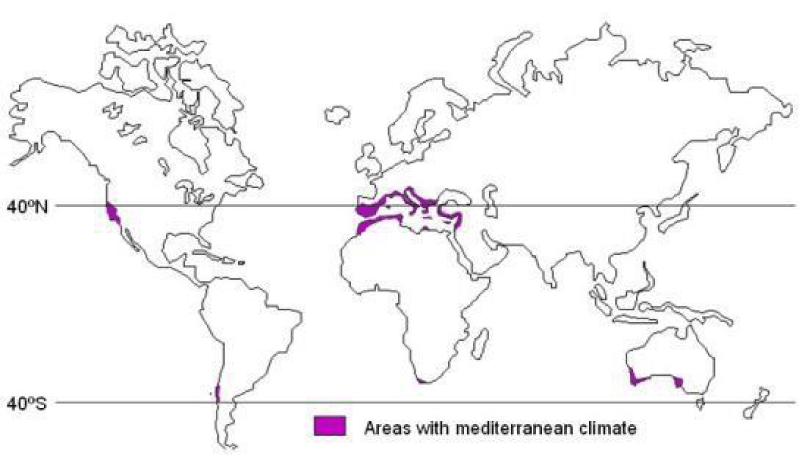
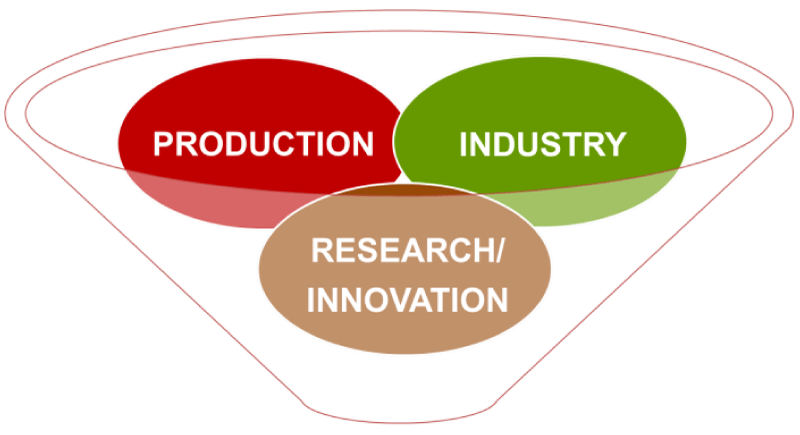
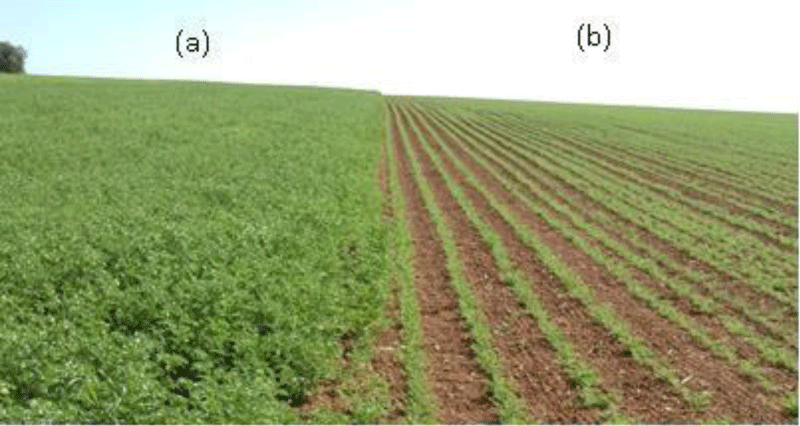
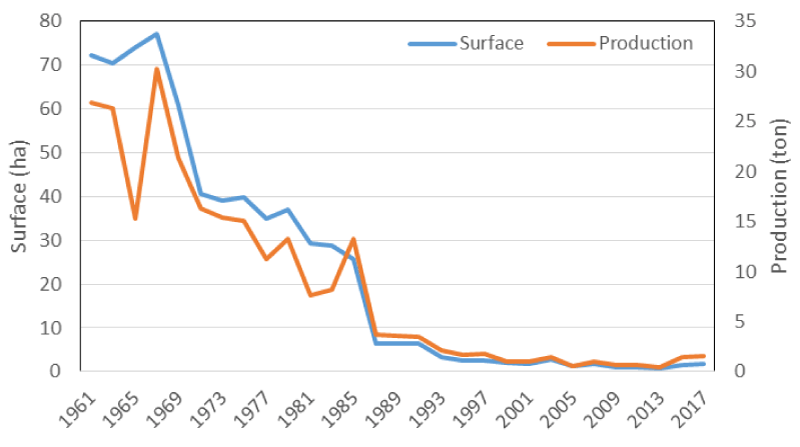
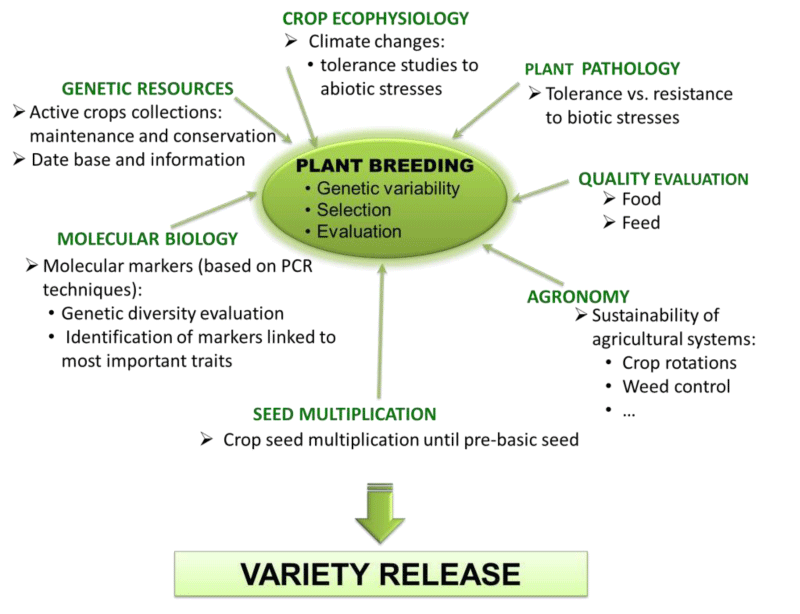
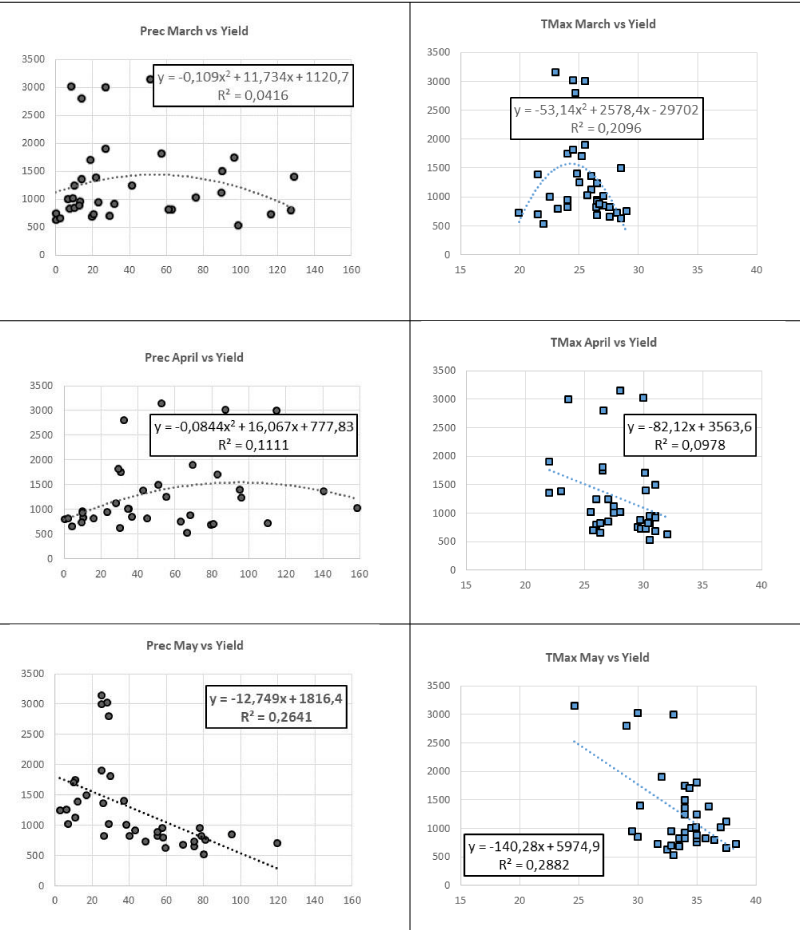

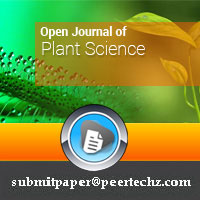
 Save to Mendeley
Save to Mendeley
